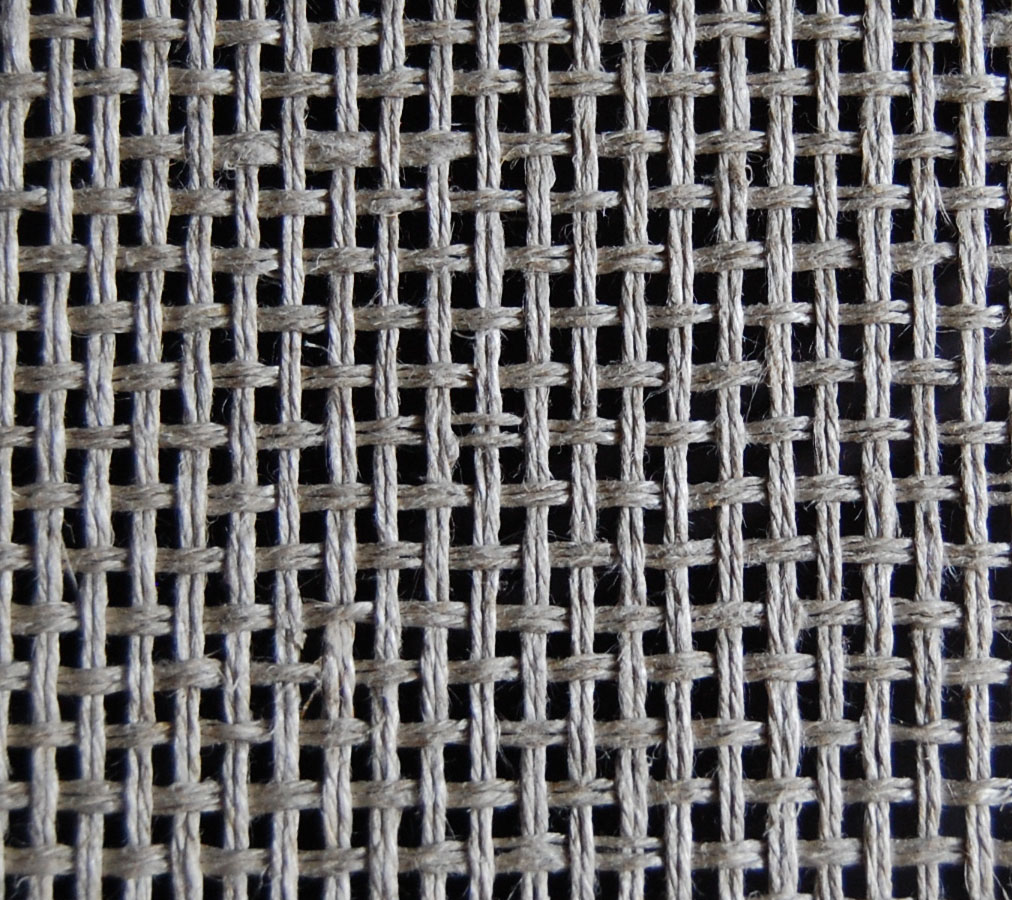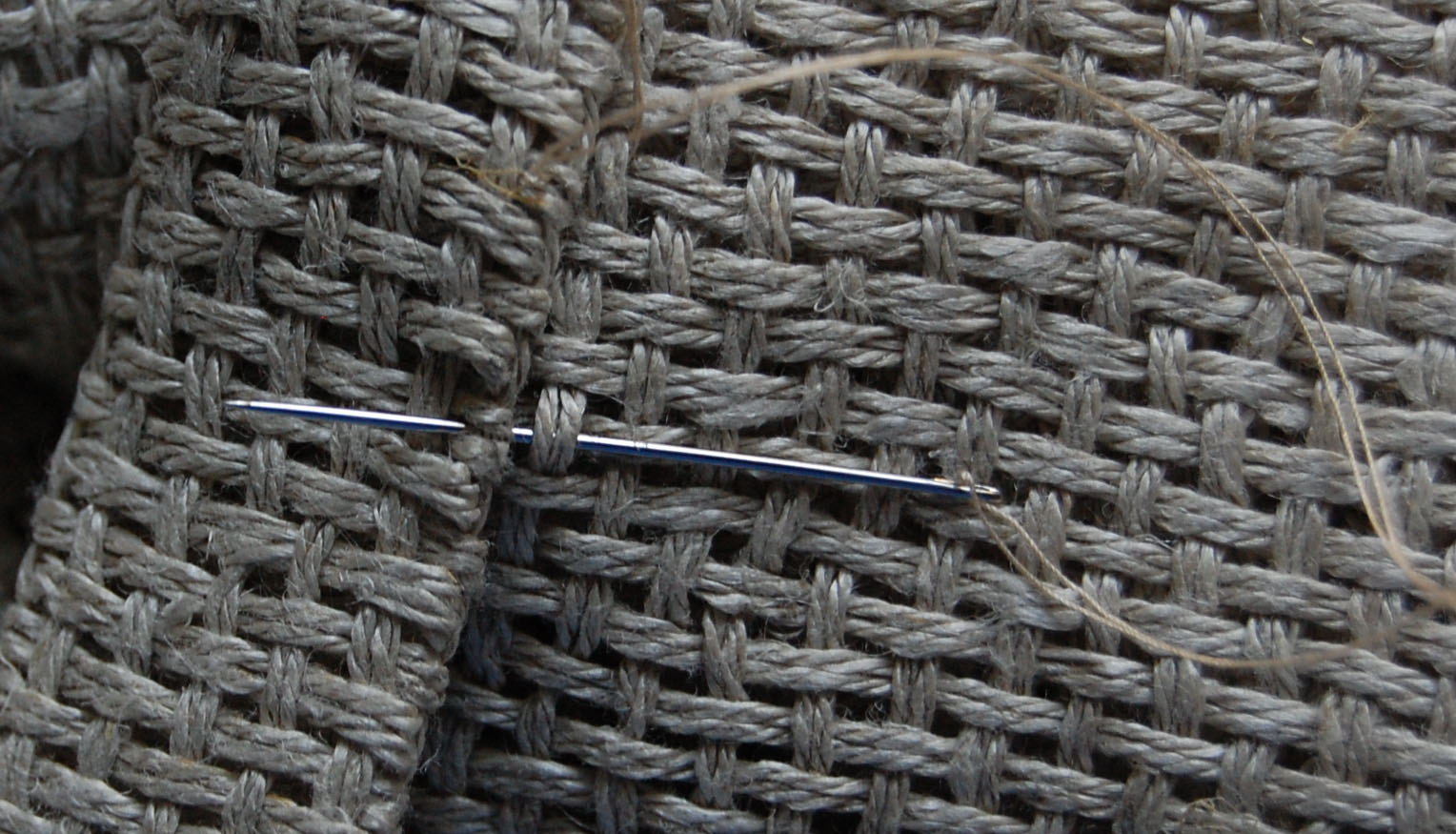Summer Curtains in Hemp
By Melissa Ludden Hankens
When the weather warms enough to open the windows, they are thrown open with great ceremony here in Salem. We see some of our neighbors for the first time in months, and there is much talk about how much the kids have all grown over the winter. Of course there are some drawbacks to living in an urban area. For one, the houses in our historic neighborhood are rather close together, so creating a sense of privacy without closing up the house is important.
My goal was to create a fabric that looked like screen using a summer-weight fiber. I wanted the weave structure to allow air to flow through the fabric, but not be so sheer that you could see through the curtains. I decided to weave with hemp, a bast fiber similar to linen, that when washed, air-dried, and pressed, has a crisp finish that shows off this simple pattern.
I am thoroughly enjoying weaving with Lunatic Hemp Yarn. The recommended sett is 15 ends per inch for lace and plain weave and 18 ends per inch for twills. (This yarn is similar in weight to 5/2 cotton.)
These curtains, two panels for a single window, were woven on a 20" Flip rigid heddle loom using an 8-dent reed. I didn’t want folds of fabric blocking the airflow, so I opted to keep my two panels fairly narrow. The warp and weft yarns are doubled, creating an open basket weave effect. Beat gently so there is space between each pick, thus creating an airy cloth.
You will need to consider hem allowance at both the top and the bottom of your curtain panels. I used 1 ½" at the bottom and 4" at the top, though you may need more depending on your curtain rod.
If you’re inspired to weave your own summer curtains, there are several lovely curtain fabric drafts in Marguerite Porter Davison’s A Handweaver’s Pattern Book. Some examples are Jean Suter’s Mock Leno Curtains No. 37 and No. 38 found on p. 67, Montell-Glanzberg Mock Leno Curtain Cloth No. 23 on p. 68, and Ephrata Curtain Material on p. 72.
Project Details
Finished size:15 ¾" x 44 ½" (1 panel after washing)
Warp length: 130" - this yielded 106" of finished fabric
Width in reed: 17" – this yielded a 16 ¾" fabric that was reduced by 1" to 15 ¾" post-wash
Total warp ends: 272 (136 working ends)
EPI: 16 ends per inch using an 8 dent rigid heddle, two threads in each slot and hole
What You'll Need
-
Warp and weft yarn: Lunatic Fringe Classic 3-ply Hemp (1.1lb./500g cone; 1500 ypp), 1 cone needed
-
20” Flip rigid heddle loom
-
8-dent reed
-
shuttle
Directions
Using an 8-dent reed, your sett is 16 ends per inch. Thread two ends through each slot and hole. Wind your warp carefully, advancing in small steps to ensure even tension.
TIP: When warping your loom, place the rigid heddle in the up position. As the threads in the holes are the threads in motion when weaving this pattern, they are either up or down. As such, the distance they travel from front beam to back beam is slightly longer than the threads in the slots. This can be an issue when weaving with fibers that offer little or no stretch like hemp and linen.To weave, wrap two threads together around a stick shuttle so that you are passing two threads per pick. Beat the weft gently to keep your cloth open.

- Once the cloth is off the loom, zigzag stitch the cut ends to secure. Wash the fabric the same way you will wash the finished curtains. Hang to dry.
- Sew two lines of zigzag stitch across the width of the fabric and cut between the lines. Double fold and press your hems. I hand stitched my hems so that the stitching was invisible. If you pass your thread under an exposed weft pick, you shouldn’t be able to see it on the opposite side.


